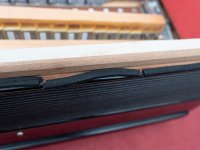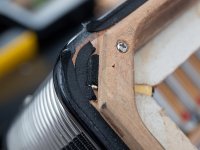yaroslav9728
Active member
Hi all members of this forum,
I noticed that my piano accordion has air leaks inside of the treble side in the right hand, although bellows don't have any damages or gaps in both sides. What could cause this problem and how to fix it?
I noticed that my piano accordion has air leaks inside of the treble side in the right hand, although bellows don't have any damages or gaps in both sides. What could cause this problem and how to fix it?


